You can install superchargers and turbos to get more power out of your car's engine. But the big question is can you install a supercharger or turbo on any vehicle? We researched the answer to that question with the help of automotive experts.
Adding a supercharger or turbocharger to any vehicle is possible, except for electric cars. Since many companies make parts to fit any engine, it is possible to get them installed. You should find a trusted mechanic who can install the supercharger or turbo and tune it.
Though installing a turbo or supercharger onto any engine is possible, it will not be easy for some cars since you'll have to find the right parts. Keep on reading to find out more about turbos and superchargers.
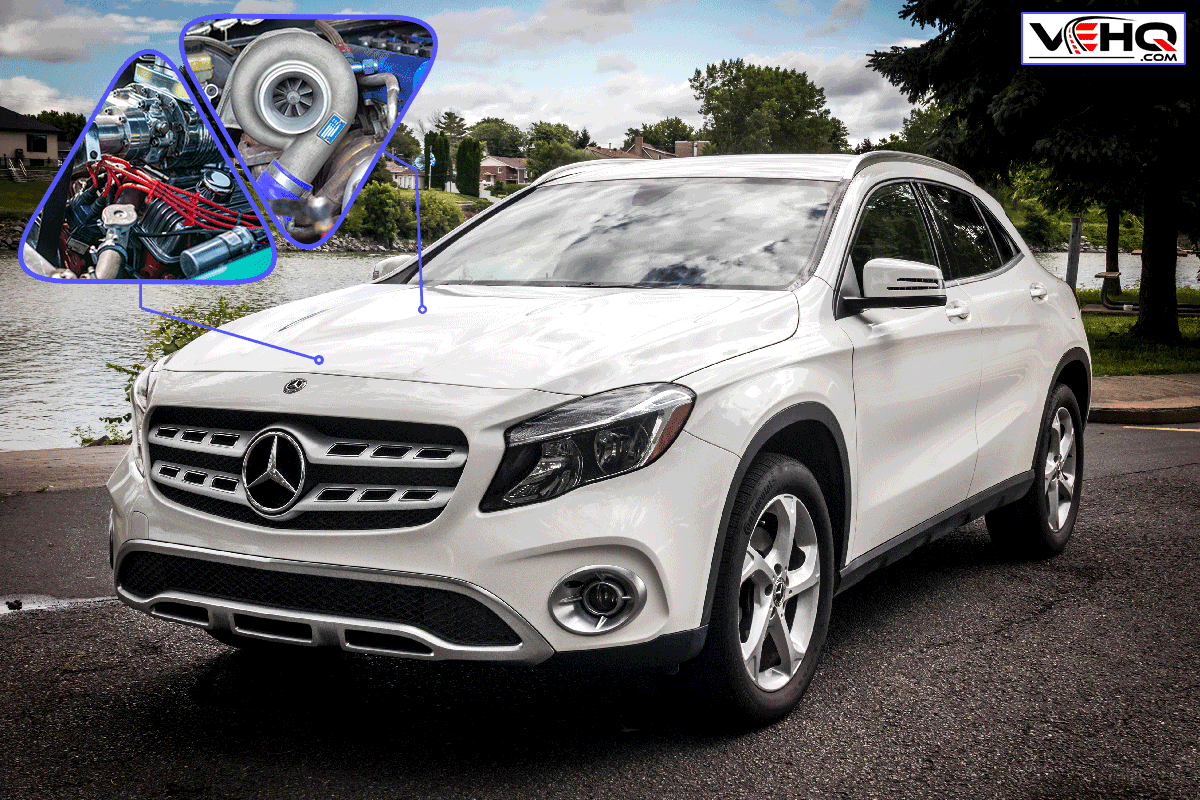
Superchargers And Turbochargers On Cars
The primary purpose of adding a supercharger or turbocharger is to increase power output. Installing both a turbo and a supercharger may vary in complexity, from a simple bolt-on to a full-on conversion.
Though you can install the supercharger and turbo on any vehicle, you'll have to ask yourself whether your car can handle it. Not all turbos and superchargers put out the same amount of power. In some cases, you'll even find two turbos or a mix of a supercharger and turbo in one engine setup.
Superchargers
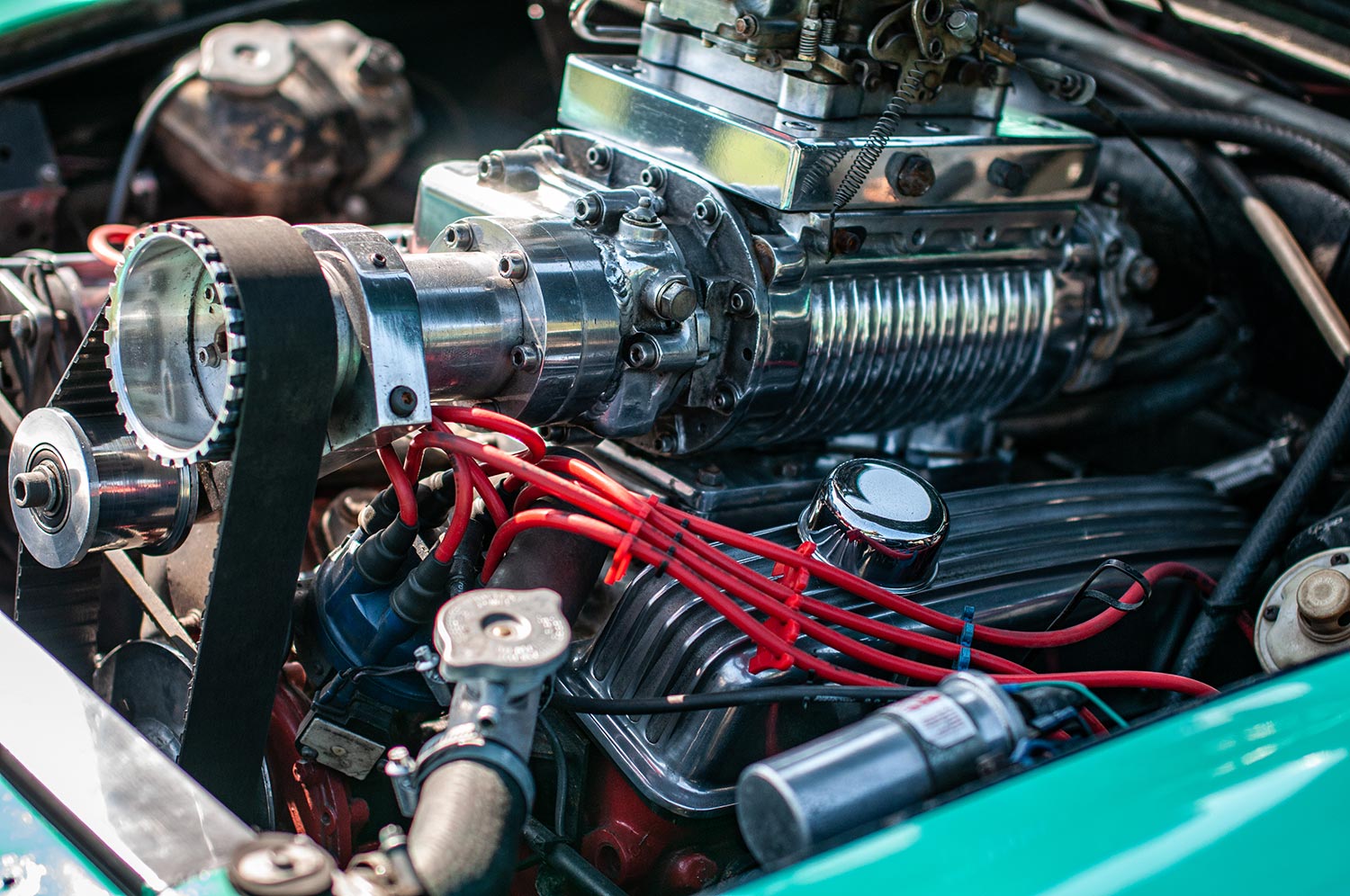
Superchargers operate mechanically using the belts on the engine. Superchargers and turbos are both dynamic compressors.
Both suck in air at accelerated high speeds, and then get slowed down to increase their pressure. Air gets drawn into an impeller, where centrifugal force flings it out in a compressor housing; this is where the speed gets compressed.
A typical supercharger has two shafts attached to a pully, which will be belt driven. When a vehicle has a supercharger, you'll hear a whine when the car accelerates. Also, superchargers tend to be heavier but can give an almost instant boost.
Here are some examples of vehicles that have a trim with superchargers.
- Dodge Challenger
- Ford Mustang
- Chevrolet Camaro
- Land Rover Range Rover Sport
- Audi A7
- R50 Mini Cooper S
For the most part, you can commonly find superchargers installed in vehicles with V8 engines or higher. Though it is possible to put a supercharger on any car, some vehicles may require extensive modifications.
Turbos
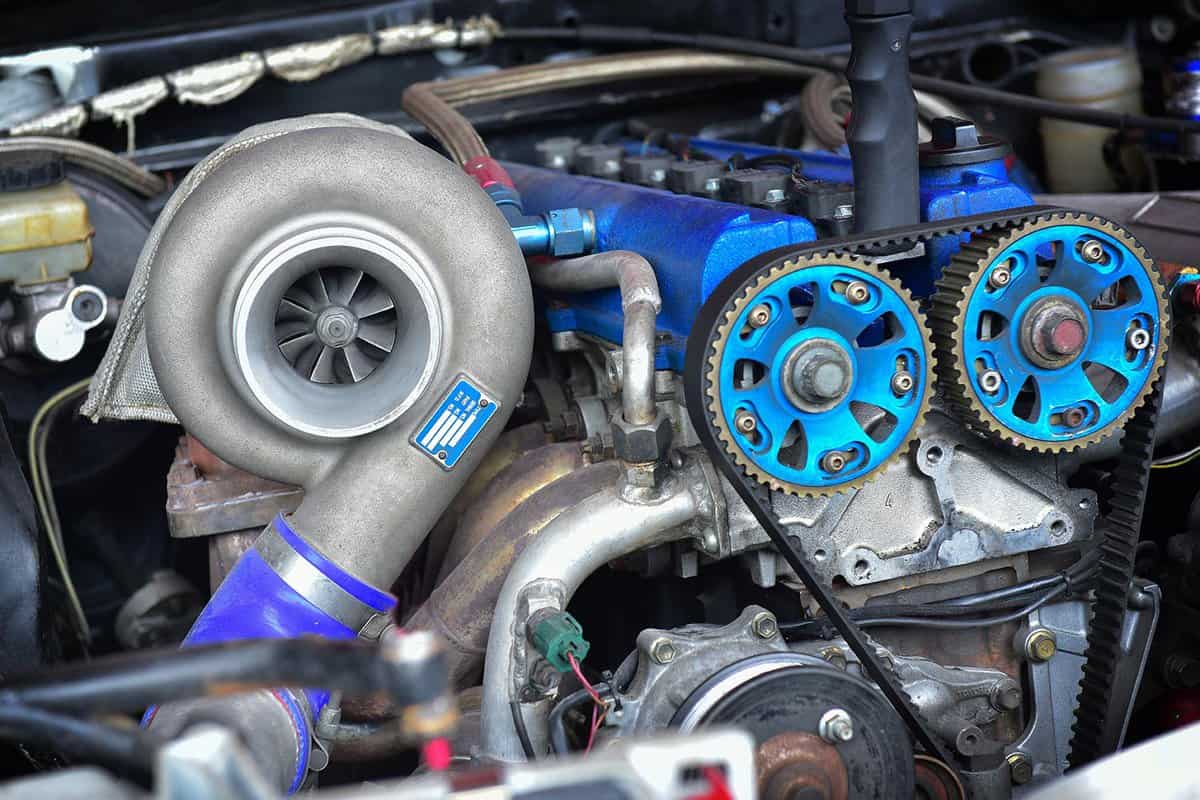
Turbos are one of the best options for adding more power to your vehicle. There are many different turbo sizes you can choose from, and you can even put two or even more in one engine.
To get more power, you'll need more fuel. Getting more is quite simple, but without additional air, this will be pointless.
An engine's cylinder is limited in how much air it can take in by its size or displacement. That's why before, you'll have to have a bigger engine if you want to get more power.
When the turbo came onto the automotive market, it solved this problem. You can have a higher power output even if you have a small displacement.
With a turbo, exhaust air gets piped into the turbo's hot side, spinning a turbine and getting shot out. Connected to the hot side of the turbo is its cold side. The cold side also has a turbine that spins when it sucks in cold air through an inlet and shoots it out an outlet into the car's intake manifold.
At this point, the air is denser and has more oxygen to burn more gas, giving your engine more power. To ensure you get cold air between your turbo and manifold, you have an intercooler to help cool down incoming air.
Your piping would have a blow-off valve to relieve the pressure when you let off your gas releasing the air back into the atmosphere. Turbos also produce a noise that some people may enjoy, such as a spooling noise. It is also called turbo lag.
Unlike superchargers, a turbo boost needs to build up, but twin-turbos can fix turbo lag by installing two smaller turbos. Below are some of the vehicles that have a trim with turbo.
- Nissan GTR
- Ford Fiesta ST
- Honda Civic TypeR
- Subaru WRX
- Volkswagen Golf GTI
- Cadillac ATS
Turbos are more commonly found on cars than superchargers since they are cheaper and keep the car's overall weight down. You can also find turbos on midlevel trims giving them more power.
What Do You Need To Turbo A Car
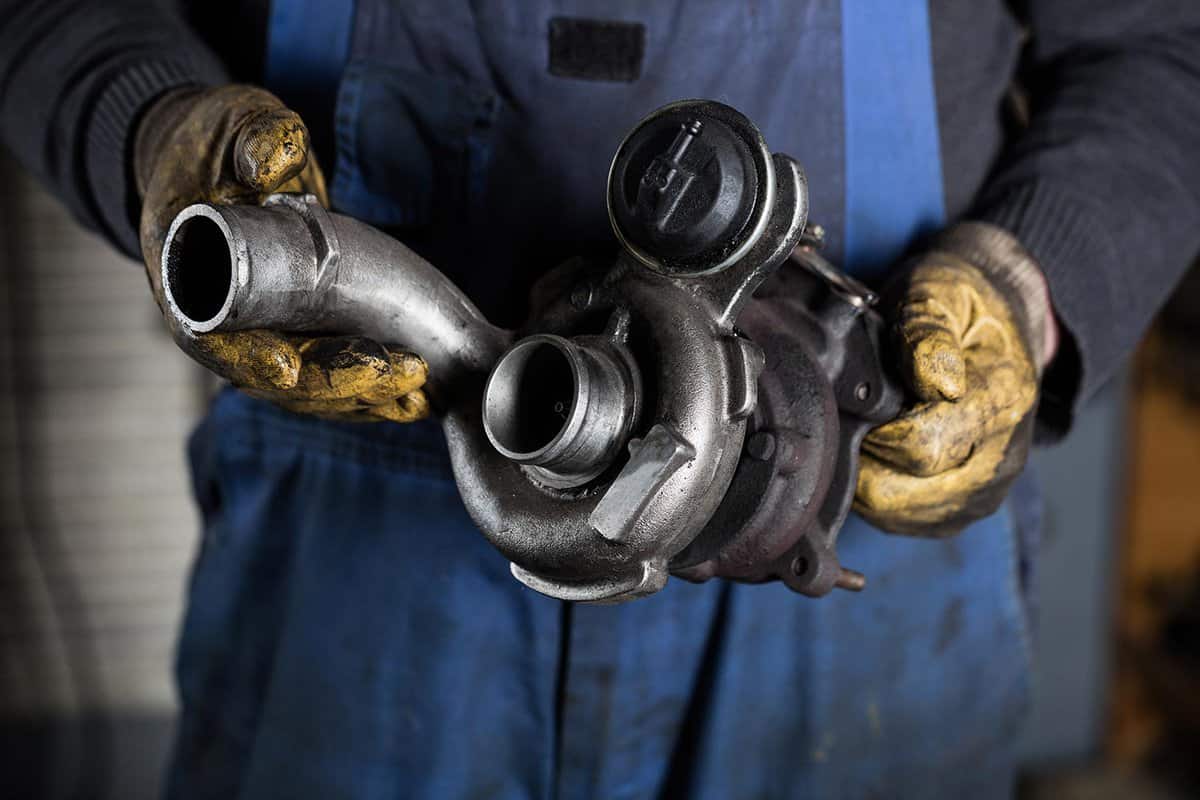
Putting a turbo on your vehicle can be a weekend job or may take longer, depending on how complex your turbo is. When getting parts for a turbo system, you'll have two main ways of getting them.
You can buy a kit that will fit your vehicle perfectly or get different mixed parts from other brands to get a more custom setup. Though turbo kits usually have a manual for installing them, proper expertise is still needed. Ask someone who is knowledgeable about cars or have a mechanic install it for you.
Below are some of the parts that will need to install a turbo.
Turbo
The important part is choosing your turbo since this will be the central piece of the main part of your kit. The turbo will look like a snail with a turbine in the middle of it. If you get a secondhand turbo, you'll notice that one side may be clean while the other is rusty.
You should expect the rust on the other side of the turbo, since the turbo's hot side will constantly fill this with hot air, which can turn the metal turbine red. Just make sure there are no cracks or missing components.
Wastegate
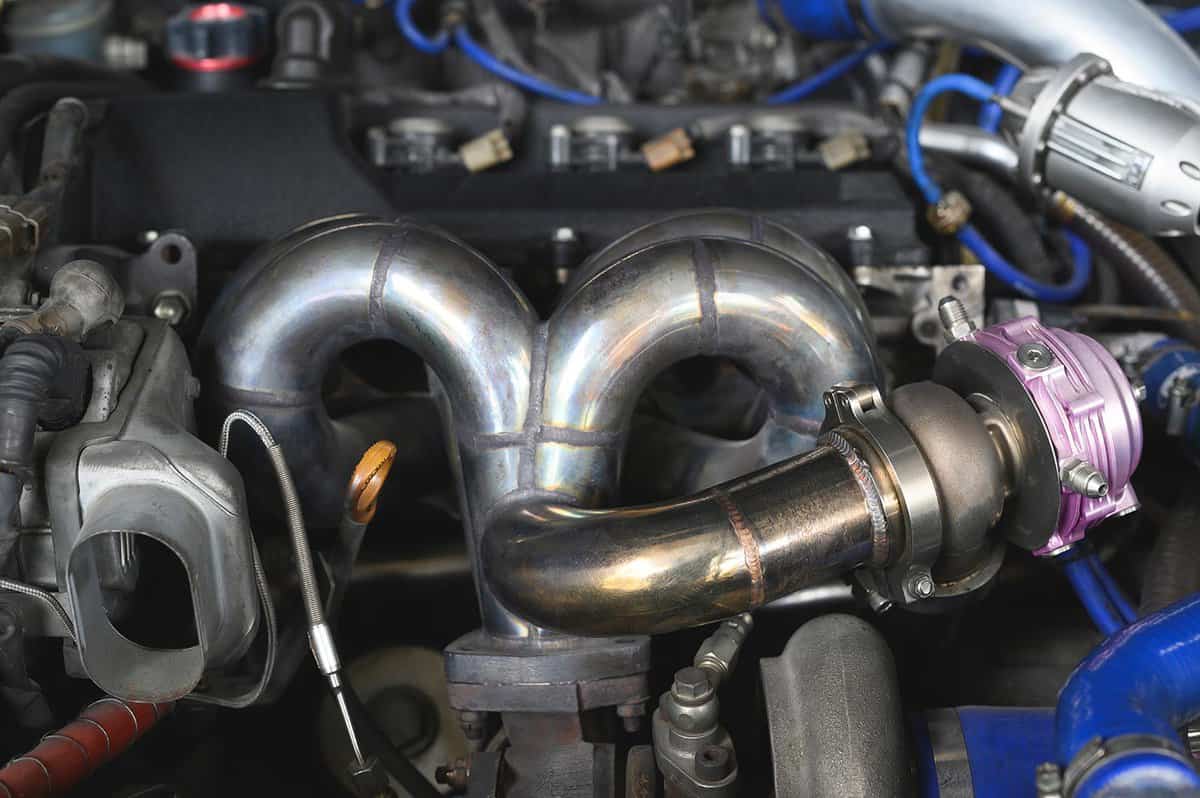
You'll find some turbos already have a wastegate, while float turbos usually don't have them. A wastegate diverts the exhaust gases from the turbo to prevent it from spinning too fast. And by controlling the turbine speed, the wastegate can also control the amount of boost the turbo makes.
Intercooler
An intercooler is an air-to-air radiator. It helps cool the air from your turbo before it goes into your manifold. The cooler the air, the denser it is; the more power your engine can produce, the thicker the air.
Intercoolers come in different sizes. What's excellent with parts right now is that they make intercoolers to fit specific cars. If you can't find an intercooler that fits your car correctly, you can have a custom one made for your vehicle.
Another thing to think about is the piping. It will be cheaper if you make the piping yourself, but having a mechanic do it for you will be easier.
Intake
Intakes are components that help suck air in, and they can even filter it. Some people stick an intake straight into the turbo. This could work, but it is not efficient. The best way to install an intake is to place it somewhere it can suck up fresh cold air.
Exhaust Manifold
There are two main types of manifold: tubular and cast. A tubular manifold is lighter and can flow better if appropriately designed. The main downside is that it can cost a lot of money.
Cast manifolds are cheaper and much more reliable, but they are heavy, and the flow won't be as good. A heavy manifold and lousy airflow can affect your build if you look at performance.
Downpipe
The downpipe connects the turbine outlet to the rest of the exhaust system. Usually, you can get the exhaust manifold and the downpipe in one kit.
Lines
There are a bunch of lines you have to think about: these are the oil and cooling lines. Oil lines are essential since they will help lubricate your turbos. Usually, when a turbo fails, there is an issue with the oil line.
Cooling lines are also needed to help your turbo cool. With cooling lines, you can use any universal tubing, silicone or rubber.
Blow-Off Valve
Blow-off valves prevent compressor surge, which could potentially damage your turbo. Whenever you remove your foot from the accelerator, your blow-off valve releases compressed air out of the pipings.
Fueling
Since you need to balance the fuel and air you get, you'll need to add more fuel since the turbo will need to supply more air. The fuel you'll need will depend on the turbo you have. Parts that might need replacement are fuel injectors, fuel rails, or fuel pumps.
Boost Gauge
The boost gauge will help monitor the amount of boost your turbo is making. The boost pressure reading will come from your intake's manifold using a vacuum line.
Extra Gauge And Sensors
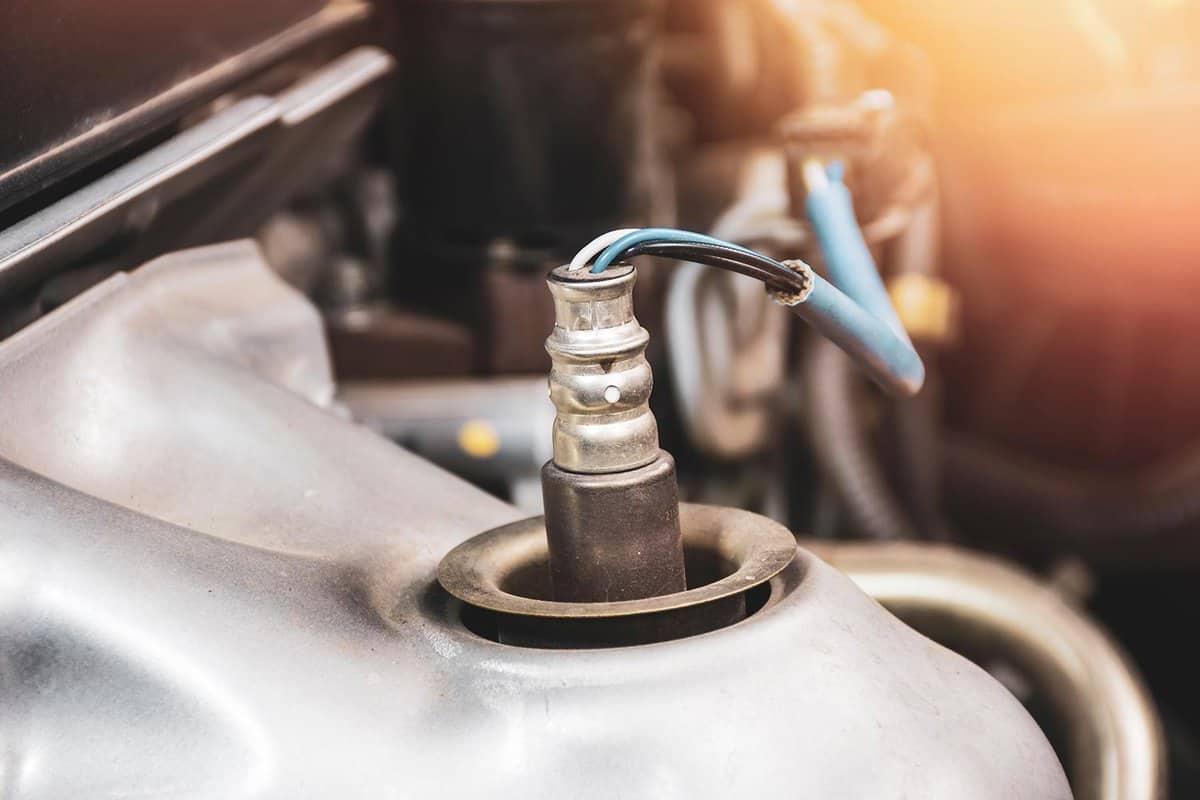
The extra stuff you might need is a wideband O2 sensor and air-fuel-ratio gauge. Usually, these two components will come as a pack. The O2 sensor will sit in your exhaust, sense the amount of oxygen in your exhaust gases, and calculate your air-to-fuel ratio.
Tuning
Tuning is essential when installing a turbo since your vehicle may run rich or lean. You should get a trusted tuner who knows what they are doing because a bad tune may cause engine damage. A good mechanic will adequately tune your vehicle for reliable power output.
Final Thoughts
Installing a turbo or supercharge is possible with any vehicle. You'll need the right components since not every engine is identical. Have a trusted mechanic install your turbo kit to ensure it will work properly.
For more automotive information, check out these posts.
Does Blue Beacon Wash Pickup Trucks?
How To Remove Glass Chalk Marker From Car Windows
